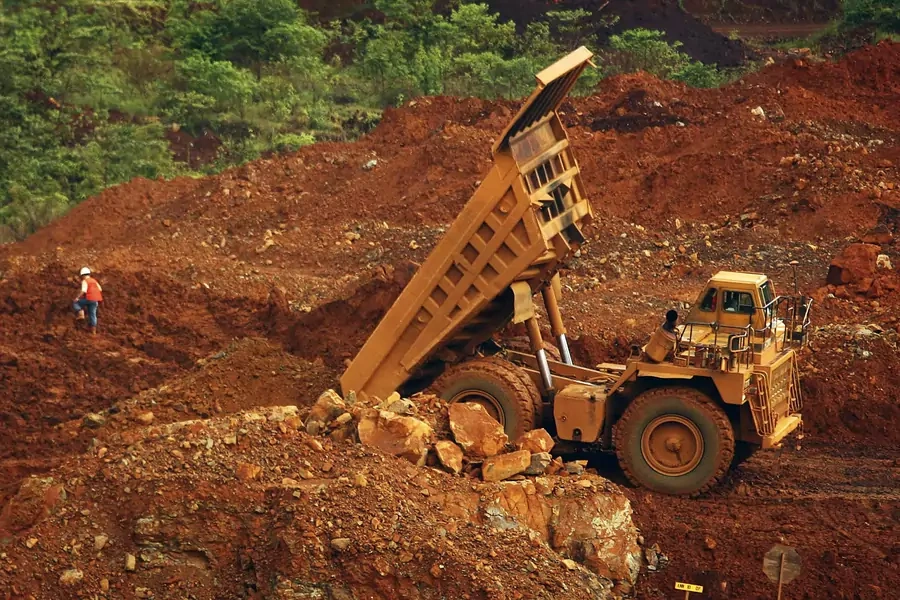The President’s Inbox Recap: Critical Minerals and China

The latest episode of The President’s Inbox is live, and we’ve revived the practice of posting a weekly episode recap on The Water’s Edge. This week, Jim sat down with Morgan Bazilian, the Director of the Payne Institute and a professor of public policy at the Colorado School of Mines.
Critical Minerals and China, With Morgan Bazilian
Morgan Bazilian, director of the Payne Institute and a professor of public policy at the Colorado School of Mines, sits down with James M. Lindsay to discuss why critical minerals have emerged as a major issue in the U.S.-China geopolitical competition.
They discussed the role of critical minerals in geopolitical competition with China.
Here are four takeaways from the conversation:
More on:
1. Critical minerals are essential for the green energy transition. Lithium, cobalt, nickel, copper, and other minerals are critical to building the batteries, electrical grids, and solar facilities needed to move away from fossil fuels. Demand for lithium alone is predicted to increase thirteen-fold by 2040 and could become a sticking point in the green energy transition. Nor is demand for critical minerals limited to the energy sector; they’re widely used to manufacture everything from smartphones to advanced weaponry.
2. China dominates the critical mineral supply chain. A few countries sit atop vast mineral reserves. Seventy-five percent of the world’s known lithium reserves are found in Argentina, Bolivia, and Chile. The Democratic Republic of the Congo possess more than half the world’s cobalt reserves. Indonesia has more than 20 percent of the world’s nickel reserves. Regardless of where mines might be located, China owns or finances many of them. As recently as 2020, China owned and financed fifteen of the nineteen cobalt mines in the DROC. China also dominates the refining process. It controls 65 percent of cobalt refining, nearly 60 percent of the lithium refining, and as much as 95 percent of manganese refining. This dominance gives China leverage over customers, something it has used in the past. In 2010, China stopped exporting rare earth elements (a subset of critical minerals essential to electronics manufacturing) to Japan amid heightened tensions between the two countries.
3. The United States can lessen its dependence but doing so will take time. The United States is working with its allies and partners to lessen potential vulnerabilities to disruptions in critical mineral supply. The recently signed Mineral Security Partnership with Australia, Canada, the United Kingdom, France, Germany, Japan, South Korea, and others would allow investments in mining infrastructure abroad by the United States through the Export-Import Bank. The United States is currently negotiating a deal with the EU that would harmonize rules governing critical minerals used in electric batteries. The United States struck a similar deal with Japan last month. President Biden could also invoke the Defense Production Act to rapidly increase domestic investment in critical minerals. But all of these steps will take time to produce results. It can take more than sixteen years to make a new mine operational. There’s been pushback to investments in mining and processing due to their harmful environmental impacts, and both Democratic and Republican lawmakers have voiced concern about a need for congressional oversight in the trade agreements.
4. Technological advancements could lessen supply chain vulnerabilities. Technology has a long history of solving scarcity problems. Critical minerals could provide yet another example. For example, progress is being made on developing sodium batteries. They don’t require either cobalt or nickel as lithium batteries do. Even better for the United States, Wyoming sits on top of more than 90 percent of the world’s main industrial source of sodium. But it would take time to scale up sodium battery production and ease doubts about their durability, let alone ramp up construction of sodium battery factories to compete with China and get the rest of the world onboard.
Shortly after Jim and Morgan talked, Chile nationalized its lithium reserves, citing economic and environmental concerns. Chile isn’t the first country to make this move. Mexico did the same last year.
More on:
If you’re looking to read more of Morgan’s work, check out the piece he co-wrote earlier this year for Foreign Affairs arguing that the United States needs to rework its supply chains at home and abroad to “win the energy battle of the twenty-first century.” In another article for Foreign Policy, he and his co-authors warned America’s dependency on the critical minerals that China dominates poses a national security risk. He also co-wrote a piece for the Wilson Center’s New Security Beat blog that argued the United States needs to diversify its supply chains globally and domestically so that its climate mitigation strategies and military readiness are not in competition with one another.
 Online Store
Online Store